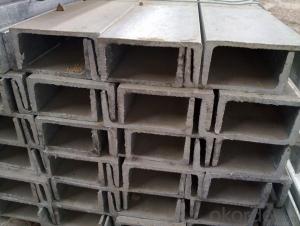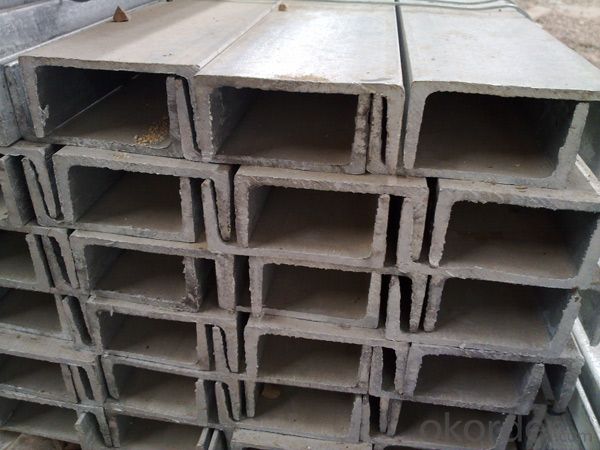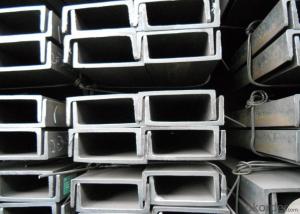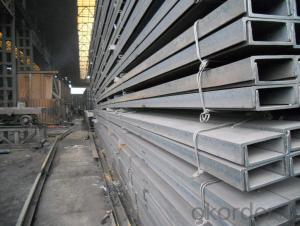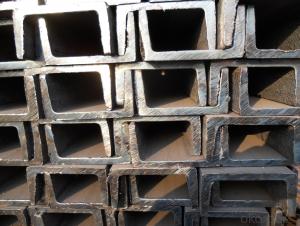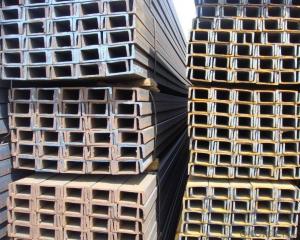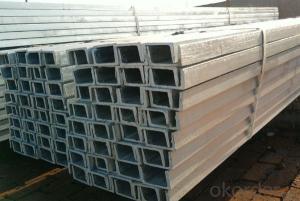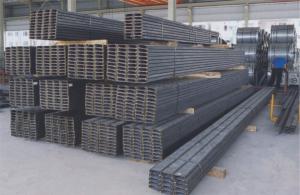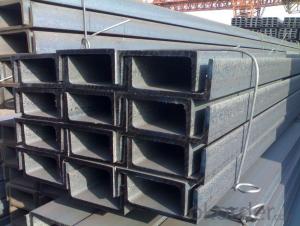UPN Hot Rolled High Quality 80MM-180MM EN Standard
- Loading Port:
- Tianjin
- Payment Terms:
- TT OR LC
- Min Order Qty:
- 25 m.t.
- Supply Capability:
- 20000 m.t./month
OKorder Service Pledge
OKorder Financial Service
You Might Also Like
Product Description:
OKorder is offering UPN Hot Rolled High Quality 80MM-180MM EN Standard at great prices with worldwide shipping. Our supplier is a world-class manufacturer of steel, with our products utilized the world over. OKorder annually supplies products to European, North American and Asian markets. We provide quotations within 24 hours of receiving an inquiry and guarantee competitive prices.
Product Applications:
According to the needs of different structures, UPN Hot Rolled High Quality 80MM-180MM EN Standard can compose to different force support component, and also can be the connections between components. It is widely used in various building structures and engineering structures such as roof beams, bridges, transmission towers, hoisting machinery and transport machinery, ships, industrial furnaces, reaction tower, container frame and warehouse etc
Product Advantages:
OKorder's UPN Hot Rolled High Quality 80MM-180MM EN Standard are durable, strong, and resist corrosion.
Main Product Features:
· Premium quality
· Prompt delivery & seaworthy packing (30 days after receiving deposit)
· Corrosion resistance
· Can be recycled and reused
· Mill test certification
· Professional Service
· Competitive pricing
Product Specifications:
Manufacture: Hot rolled
Grade: Q195 – 235
Certificates: ISO, SGS, BV, CIQ
Length: 6m – 12m, as per customer request
Packaging: Export packing, nude packing, bundled
Sizes: 25mm-250mm | ||||||||||||
a*t | ||||||||||||
25*2.5-4.0 | 70*6.0-9.0 | 130*9.0-15 | ||||||||||
30*2.5-6.6 | 75*6.0-9.0 | 140*10-14 | ||||||||||
36*3.0-5.0 | 80*5.0-10 | 150*10-20 | ||||||||||
38*2.3-6.0 | 90*7.0-10 | 160*10-16 | ||||||||||
40*3.0-5.0 | 100*6.0-12 | 175*12-15 | ||||||||||
45*4.0-6.0 | 110*8.0-10 | 180*12-18 | ||||||||||
50*4.0-6.0 | 120*6.0-15 | 200*14-25 | ||||||||||
60*4.0-8.0 | 125*8.0-14 | 250*25 | ||||||||||
FAQ:
Q1: How do we guarantee the quality of our products?
A1: We have established an advanced quality management system which conducts strict quality tests at every step, from raw materials to the final product. At the same time, we provide extensive follow-up service assurances as required.
Q2: What makes stainless steel stainless?
A2: Stainless steel must contain at least 10.5 % chromium. It is this element that reacts with the oxygen in the air to form a complex chrome-oxide surface layer that is invisible but strong enough to prevent further oxygen from "staining" (rusting) the surface. Higher levels of chromium and the addition of other alloying elements such as nickel and molybdenum enhance this surface layer and improve the corrosion resistance of the stainless material.
Q3: How do you package the angle steel when shipping?
A3: All goods are packed in bundles with steel strips and shipped by container or break bulk.
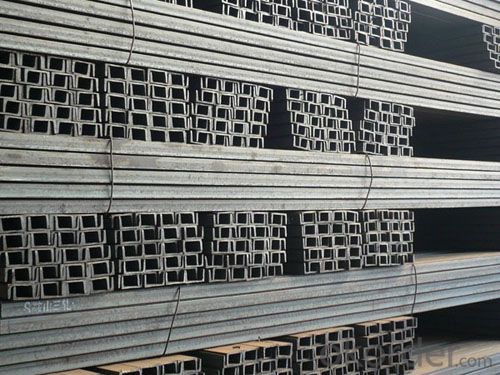
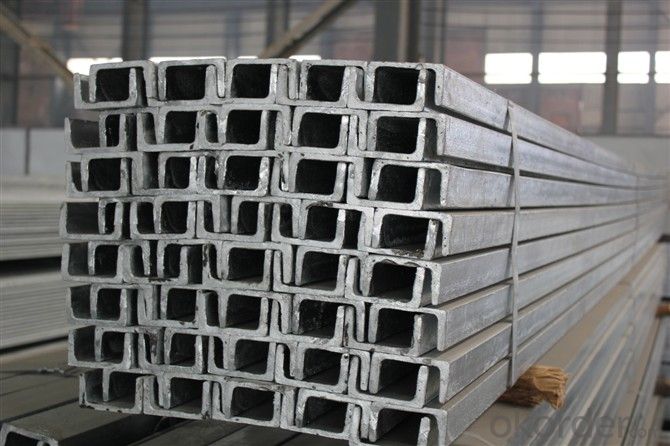
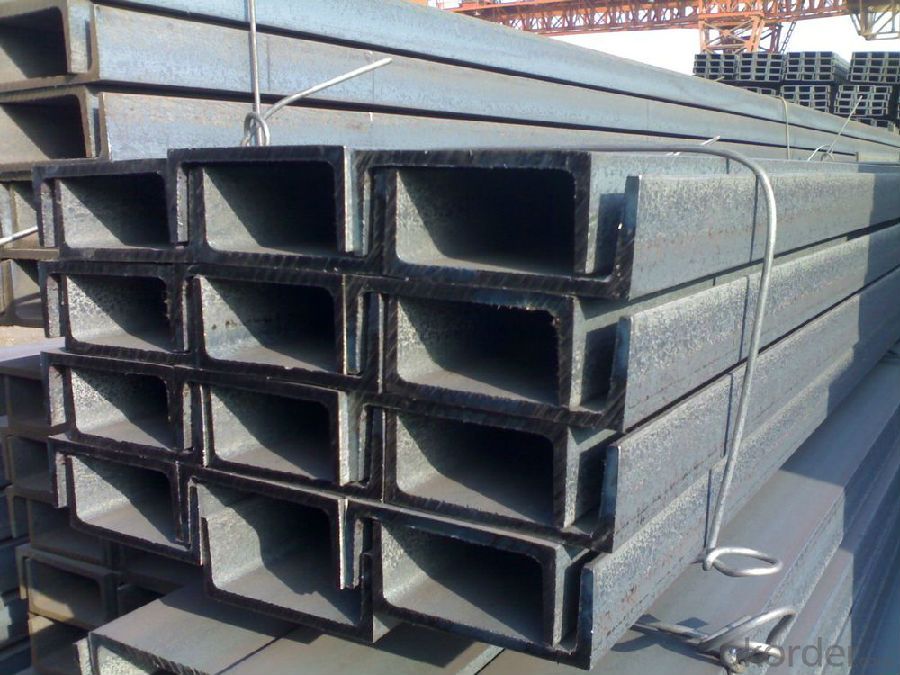
- Q: What are the different types of steel channel connections used in industrial buildings?
- There are several types of steel channel connections used in industrial buildings. Some common examples include bolted connections, welded connections, and moment connections. Bolted connections involve using bolts and nuts to secure the channels together, while welded connections involve joining the channels through welding. Moment connections, on the other hand, are more complex and are designed to resist bending moments in the structure. These connections typically involve additional plates and welding to provide stability and strength.
- Q: Can steel channels be used in infrastructure projects?
- Yes, steel channels can be used in infrastructure projects. Steel channels are commonly utilized to provide structural support and reinforcement in various infrastructure applications such as bridges, buildings, highways, and railways. Their high strength and durability make them suitable for withstanding heavy loads and adverse environmental conditions, ensuring the stability and longevity of the infrastructure.
- Q: Can steel channels be used for conveyors?
- Certainly, conveyors can utilize steel channels. In conveyor systems, steel channels are usually employed to furnish structural reinforcement and steadfastness. They frequently serve as the backbone for the conveyor system, furnishing a robust foundation for other constituents like rollers, belts, and motors. Steel channels present exceptional strength, durability, and resilience to deterioration, rendering them appropriate for managing substantial loads and extended periods of operation. Furthermore, steel channels can be conveniently personalized and manufactured to accommodate precise conveyor needs, offering versatility in both design and installation.
- Q: What do you mean by "A" in the channel type?
- A thin waist is the most.The width of their legs is equal to the waist thickness difference, that is, the real leg (not including waist thickness) is the same length, and the average leg thickness is the same.
- Q: What are the different grades of steel used for channels?
- There are several different grades of steel that are commonly used for channels. The specific grade of steel used will depend on the intended application and desired properties. One commonly used grade is A36 steel, which is a low carbon steel known for its excellent weldability and versatility. It is often used for structural applications, including channels, due to its strength and durability. Another frequently used grade is A572 steel, which is a high-strength, low-alloy steel. It offers improved strength and corrosion resistance compared to A36 steel, making it suitable for more demanding applications such as heavy-duty construction projects. Other grades of steel that may be used for channels include A588 steel, which is a weathering steel known for its corrosion resistance, and A500 steel, which is a structural steel commonly used in construction and infrastructure projects. It is important to consult with a structural engineer or steel supplier to determine the most appropriate grade of steel for a specific channel application, taking into consideration factors such as load-bearing capacity, corrosion resistance, and environmental conditions.
- Q: Can steel channels be used for structural support?
- Indeed, structural support can be achieved by utilizing steel channels. In the realm of construction, steel channels are frequently employed due to their ability to offer robustness and longevity. Buildings, bridges, and other structures often utilize steel channels to ensure stability and support. These channels are engineered to distribute weight and load evenly, making them an optimal choice for structural support. Moreover, their versatility enables them to be tailored to meet specific design criteria with ease. Ultimately, steel channels are a dependable and efficient option for providing structural support in diverse construction endeavors.
- Q: Can steel channels be used in the construction of solar panel mounting structures?
- Yes, steel channels can be used in the construction of solar panel mounting structures. Steel channels provide strong support and stability, making them suitable for holding the weight of solar panels and withstanding various environmental conditions.
- Q: What are the common applications of steel channels?
- Steel channels are commonly used in various applications such as construction, manufacturing, and infrastructure projects. They are frequently utilized as structural components in building frames, support systems, and for reinforcing concrete structures. Steel channels also find application in the fabrication of machinery, vehicles, and equipment, where their high strength and durability are advantageous. Additionally, they are used in the electrical and telecommunications industries for cable management and support.
- Q: What are the common surface finishes available for steel channels?
- Steel channels have several options for surface finishes. These finishes serve to enhance their appearance, protect against corrosion, and improve durability. One popular surface finish is a plain or mill finish. This finish involves leaving the steel channels in their natural state after manufacturing. It results in a smooth, slightly reflective surface, but does not offer additional corrosion protection. Another common surface finish is hot-dip galvanizing. This process entails immersing the steel channels in molten zinc, creating a protective coating. Hot-dip galvanized steel channels appear dull gray and provide excellent corrosion resistance, making them ideal for outdoor or high-moisture environments. Powder coating is also favored for steel channels. It involves applying a dry powder electrostatically and then curing it with heat. Powder-coated steel channels have a smooth, durable finish and are available in many colors. This finish offers good corrosion resistance and is commonly used indoors. Furthermore, steel channels can be painted using various paint finishes applied by spray, roller, or brush. Painted steel channels provide aesthetic appeal and can be customized to match specific color requirements. They also offer some corrosion protection, with the level varying based on paint quality and application process. In summary, common surface finishes for steel channels include plain or mill finish, hot-dip galvanizing, powder coating, and paint finishes. Each finish offers distinct advantages in terms of appearance, corrosion resistance, and durability. The choice of surface finish depends on the application's specific requirements and desired outcome.
- Q: What are the different methods for cutting steel channels?
- There exist numerous techniques for cutting steel channels, each presenting its own advantages and disadvantages. Among the most frequently employed methods are the following: 1. Sawing: This method entails the utilization of a circular saw or bandsaw to sever the steel channel. It is a versatile technique, accommodating both straight and angled cuts. Nevertheless, it can be time-consuming and may produce a coarse finish that necessitates additional processing. 2. Shearing: Shearing involves the deployment of a specialized machine called a shear to sever the steel channel. It is a swift and efficient method, yielding clean and precise cuts. However, it is limited to straight cuts and may not be suitable for thicker or larger steel channels. 3. Cutting torch: A cutting torch employs a high-temperature flame to melt and sever the steel channel. It is commonly utilized for thicker or heavier steel channels and can yield smooth and precise cuts. Nonetheless, it necessitates skilled operators and can be more time-consuming than other methods. 4. Plasma cutting: Plasma cutting employs a plasma torch to sever the steel channel. It is a rapid and accurate method that caters to both straight cuts and intricate shapes. Nevertheless, it necessitates specialized equipment and may generate a heat-affected zone that requires additional processing. 5. Waterjet cutting: Waterjet cutting employs a high-pressure stream of water mixed with abrasive material to sever the steel channel. It is a precise and versatile method that yields clean and accurate cuts in various materials and thicknesses. However, it can be costly and may require skilled operators. 6. Laser cutting: Laser cutting employs a focused laser beam to sever the steel channel. It is an exceedingly precise method that produces intricate cuts with minimal heat-affected zone. However, it can be expensive and may require specialized equipment and operators. When selecting the appropriate method for cutting, it is essential to consider the thickness, size, and complexity of the steel channel, as well as the desired finish and the available resources.
Send your message to us
UPN Hot Rolled High Quality 80MM-180MM EN Standard
- Loading Port:
- Tianjin
- Payment Terms:
- TT OR LC
- Min Order Qty:
- 25 m.t.
- Supply Capability:
- 20000 m.t./month
OKorder Service Pledge
OKorder Financial Service
Similar products
Hot products
Hot Searches
Related keywords
